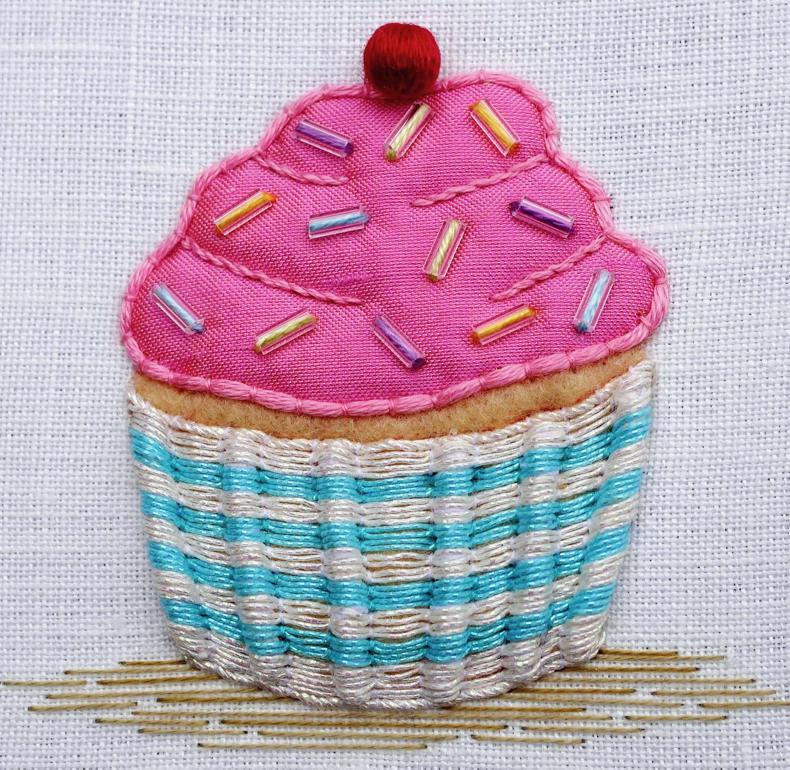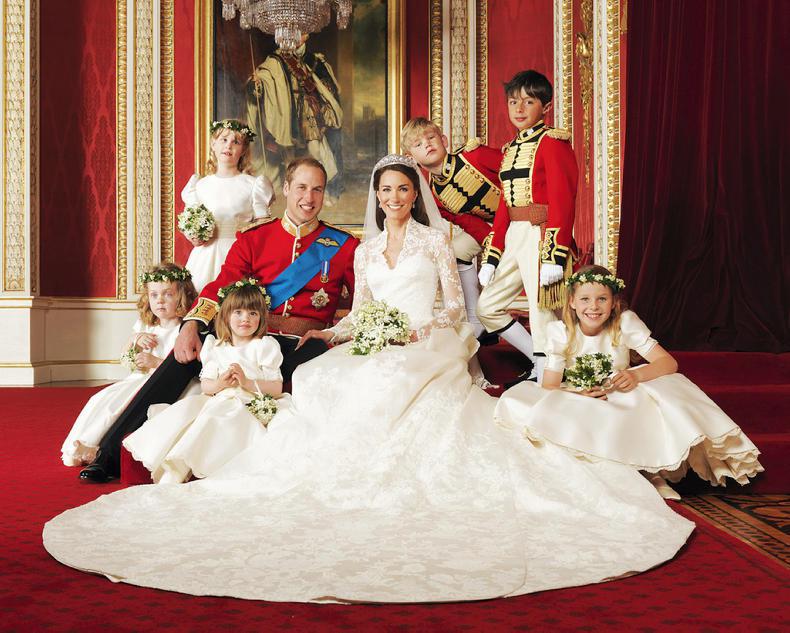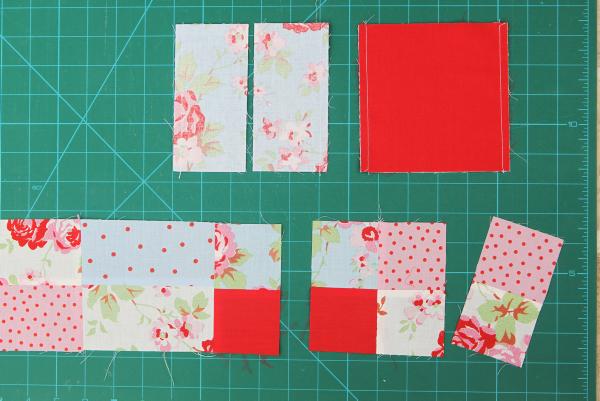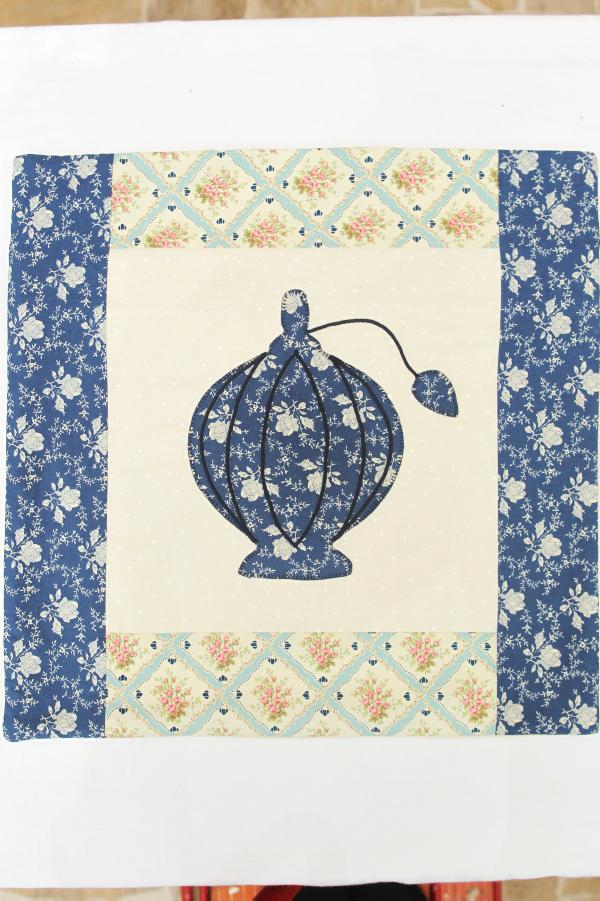Stitching the wedding dress of a princess is no easy feat, that’s for sure. As well as the expectation of producing a gown fit for royalty, there are many rules that must be adhered to.
Gemma Murray, studio project manager at the Royal School of Needlework, was a member of the team that worked on the Duchess of Cambridge, Kate Middleton’s renowned wedding dress.
The skilled stitchers at the school created the bespoke lace on the Duchess of Cambridge’s gown, veil and shoes, enabling designer Sarah Burton of Alexander McQueen to achieve her artistic vision of the bride.
Speaking with Irish Country Living, Gemma explains that every precaution was taken to insure the dress was in immaculate condition for the big day in 2011.
They were small needles and were changed every three hours. If the needles were blunt, then the thread could potentially go floppy
“We had to wash our hands every 30 minutes, to make sure the lace was kept as clean and pristine as possible. Just to maintain that fineness and high-quality finish.
“We also had to make sure that all our needles were sharp,” says Gemma. “They were small needles and were changed every three hours. If the needles were blunt, then the thread could potentially go floppy.
“It was a very short length of thread that was used as well, no longer than 30cm, because obviously when you’re working with white-on-white, it stops the material from getting grubby or dirty from handling.”
Also, to maintain an even appearance, no securing knots were used, so the back of the work looked as neat as the front.
Royal secrets
Alongside the precision detail associated with embroidering the dress, there was also a shroud of secrecy surrounding the garment. Those at the Royal School of Needlework, a school and centre of excellence for hand embroidery in the UK, working on the creation did not know at the time Sarah Burton was the designer.
“We knew what we were working on, but we didn’t know who the designer was,” says Gemma. “So it was as much a surprise for us on the morning of the wedding when they both came out of the car. We went, ‘Ah, that’s who it was’.”
Gemma and her colleagues signed a confidentiality agreement at the time and therefore were unable to tell even their nearest and dearest of their work on the royal dress.

Raised embroidery cupcake, a design that will form the basis for one of the Royal School of Needlework's classes in Dublin this summer.
Interestingly, Gemma herself got married that same year and says she definitely didn’t put as much effort into her own wedding gown, although her fiancé at the time thought she was, due to a few necessary white lies.
“I was certainly not embroidering my own dress, it was enough to embroider one for a princess, rather than my own. But it made it more special, because obviously as I was embroidering I was imagining how excited she would be and myself as well getting married.
“It was a really lovely project, but I did have to lie to my fiancé at the time, because he didn’t know what I was doing. I couldn’t tell him, I couldn’t tell my family, so I suddenly became very busy and was out of the house a lot; lots of late nights and lots of extra sittings for my own dress, that weren’t actually happening at all.
“I was working on Catherine’s wedding dress, so it was a bit of a surprise for him when he worked out that I had been slightly bending the truth. I was amazed we still got married afterwards,” jokes Gemma, “but he trusts me.”
Irish influence
The design was influenced by traditional Carrickmacross lace, which uses an embroidery technique called “appliqué”. The lace is worked on by applying organdie fabric to a delicate net background. Each motif is edged with fine cord-like thread
Sarah Burton sourced a series of lace motifs to create a unique design, applied by Gemma and her colleagues. Each motif (some as small as a 10-cent coin) was secured with minute stitches every two to three millimetres.
The Royal School of Needlework, based in London, has a long history of royal attire projects; other commissions worked on include the Queen’s coronation robe.

1930s inspired whitework flower and butterfly, a design that will form the basis for one of the Royal School of Needlework's classes in Dublin this summer.
All the studio staff are trained in the same style, so their work is indistinguishable from one another. This insures the design is consistent and makes the process more time efficient.
You wouldn’t be able to say that we all know which bit we did, but it’s a continual smooth and neat finish
“Part of our training as apprentices was that, if I started working on a section and I went for lunch or a loo break let’s say, that my colleague could jump in and carry on. Then I would take over from them again, it’s all about seamless transitions.
“You wouldn’t be able to say that we all know which bit we did, but it’s a continual smooth and neat finish. That’s what we pride ourselves on, that high skill and finish. You’re flexible and you would work on whatever to get the piece done, which is common place in large commissions like that.”
Royal School of Needlework – Dublin
This summer, from 6-12 July, the Royal School of Needlework is bringing six separate day classes to Dublin, taking place at The Constant Knitter and the Irish Countrywomen’s Association. This series of classes caters for all levels and includes; silk shaded campanula posy, raised embroidery cupcake, introduction to blackwork, introduction to crewelwork, 17th century silk dog rose and 1930s-inspired whitework. Each one-day class costs £155, which includes the kit. For more information, see www.royal-needlework.org.uk or email education@royal-needlework.org.uk.
Read more
Fashion forward: Eileen Style Queen
From the Midlands to Manhattan: meet #WearingIrish role model Margaret Molloy
Stitching the wedding dress of a princess is no easy feat, that’s for sure. As well as the expectation of producing a gown fit for royalty, there are many rules that must be adhered to.
Gemma Murray, studio project manager at the Royal School of Needlework, was a member of the team that worked on the Duchess of Cambridge, Kate Middleton’s renowned wedding dress.
The skilled stitchers at the school created the bespoke lace on the Duchess of Cambridge’s gown, veil and shoes, enabling designer Sarah Burton of Alexander McQueen to achieve her artistic vision of the bride.
Speaking with Irish Country Living, Gemma explains that every precaution was taken to insure the dress was in immaculate condition for the big day in 2011.
They were small needles and were changed every three hours. If the needles were blunt, then the thread could potentially go floppy
“We had to wash our hands every 30 minutes, to make sure the lace was kept as clean and pristine as possible. Just to maintain that fineness and high-quality finish.
“We also had to make sure that all our needles were sharp,” says Gemma. “They were small needles and were changed every three hours. If the needles were blunt, then the thread could potentially go floppy.
“It was a very short length of thread that was used as well, no longer than 30cm, because obviously when you’re working with white-on-white, it stops the material from getting grubby or dirty from handling.”
Also, to maintain an even appearance, no securing knots were used, so the back of the work looked as neat as the front.
Royal secrets
Alongside the precision detail associated with embroidering the dress, there was also a shroud of secrecy surrounding the garment. Those at the Royal School of Needlework, a school and centre of excellence for hand embroidery in the UK, working on the creation did not know at the time Sarah Burton was the designer.
“We knew what we were working on, but we didn’t know who the designer was,” says Gemma. “So it was as much a surprise for us on the morning of the wedding when they both came out of the car. We went, ‘Ah, that’s who it was’.”
Gemma and her colleagues signed a confidentiality agreement at the time and therefore were unable to tell even their nearest and dearest of their work on the royal dress.

Raised embroidery cupcake, a design that will form the basis for one of the Royal School of Needlework's classes in Dublin this summer.
Interestingly, Gemma herself got married that same year and says she definitely didn’t put as much effort into her own wedding gown, although her fiancé at the time thought she was, due to a few necessary white lies.
“I was certainly not embroidering my own dress, it was enough to embroider one for a princess, rather than my own. But it made it more special, because obviously as I was embroidering I was imagining how excited she would be and myself as well getting married.
“It was a really lovely project, but I did have to lie to my fiancé at the time, because he didn’t know what I was doing. I couldn’t tell him, I couldn’t tell my family, so I suddenly became very busy and was out of the house a lot; lots of late nights and lots of extra sittings for my own dress, that weren’t actually happening at all.
“I was working on Catherine’s wedding dress, so it was a bit of a surprise for him when he worked out that I had been slightly bending the truth. I was amazed we still got married afterwards,” jokes Gemma, “but he trusts me.”
Irish influence
The design was influenced by traditional Carrickmacross lace, which uses an embroidery technique called “appliqué”. The lace is worked on by applying organdie fabric to a delicate net background. Each motif is edged with fine cord-like thread
Sarah Burton sourced a series of lace motifs to create a unique design, applied by Gemma and her colleagues. Each motif (some as small as a 10-cent coin) was secured with minute stitches every two to three millimetres.
The Royal School of Needlework, based in London, has a long history of royal attire projects; other commissions worked on include the Queen’s coronation robe.

1930s inspired whitework flower and butterfly, a design that will form the basis for one of the Royal School of Needlework's classes in Dublin this summer.
All the studio staff are trained in the same style, so their work is indistinguishable from one another. This insures the design is consistent and makes the process more time efficient.
You wouldn’t be able to say that we all know which bit we did, but it’s a continual smooth and neat finish
“Part of our training as apprentices was that, if I started working on a section and I went for lunch or a loo break let’s say, that my colleague could jump in and carry on. Then I would take over from them again, it’s all about seamless transitions.
“You wouldn’t be able to say that we all know which bit we did, but it’s a continual smooth and neat finish. That’s what we pride ourselves on, that high skill and finish. You’re flexible and you would work on whatever to get the piece done, which is common place in large commissions like that.”
Royal School of Needlework – Dublin
This summer, from 6-12 July, the Royal School of Needlework is bringing six separate day classes to Dublin, taking place at The Constant Knitter and the Irish Countrywomen’s Association. This series of classes caters for all levels and includes; silk shaded campanula posy, raised embroidery cupcake, introduction to blackwork, introduction to crewelwork, 17th century silk dog rose and 1930s-inspired whitework. Each one-day class costs £155, which includes the kit. For more information, see www.royal-needlework.org.uk or email education@royal-needlework.org.uk.
Read more
Fashion forward: Eileen Style Queen
From the Midlands to Manhattan: meet #WearingIrish role model Margaret Molloy












SHARING OPTIONS